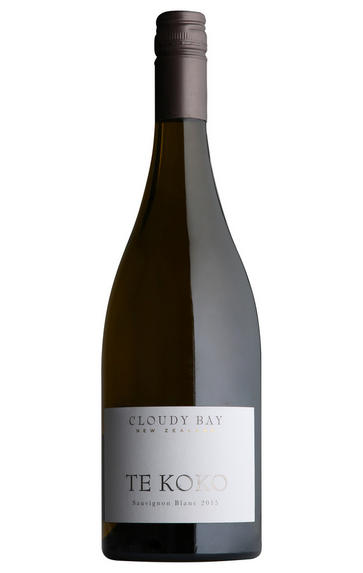
2015 Cloudy Bay, Te Koko, Sauvignon Blanc, Marlborough, New Zealand
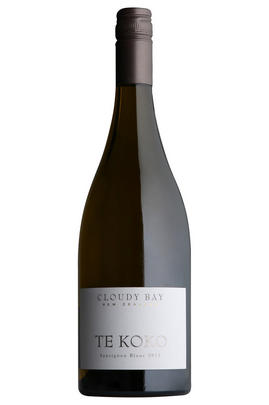
Critics reviews
The 2015 Te Koko has less of the pyrazine elements than the 2014, is more mineral-driven and shows greater clarity and tension. The elegant palate is well balanced with a fine bead of acidity and hints of blackcurrant leaf and aniseed towards the complex and quite persistent finish. This is a delicious Te Koko that should give a decade of drinking pleasure, possibly more.
Drink 2018 - 2026
Neal Martin, Vinous.com (November 2018)
Multi-site blend with a significant proportion from Wairau. Gentle pressing. Settled for 24 hours. 8% new oak fermentation with indigenous yeast for 15 months. Partial MLF. TA 7.9 g/l, pH 2.98.
Pale-medium lemon gold. Bacon fat, spice and smoke. Vanilla edge to touches of capsicum and gooseberry. Rich, textured palate with spice, vanilla and waxiness to gooseberry and boxwood. It's complex and long if you like the style.
Drink 2019 - 2023
Tim Jackson MW, JancisRobinson.com (July 2019)
As more wineries have adopted this style of Sauvignon Blanc, Te Koko isn't the standout wine it once was. That doesn't mean it's not still excellent. The 2015 Te Koko offers pungency and passion fruit on the nose, followed by a wine of great concentration and intensity. Hints of struck flint add complexity, while the mouth-filling palate boasts a rich, multilayered texture and a lingering finish. Only 8% aged in new French oak, and about a third of the wine went through malolactic fermentation, leaving it with crisp acids and a great sense of elegance and balance.
The team at Cloudy Bay has streamlined the lineup to just three varieties: Chardonnay, Pinot Noir and Sauvignon Blanc. About 70% of the production is Sauvignon Blanc, with 10% each devoted to sparkling wine, Pinot Noir and Chardonnay. The Pelorus sparkling wines seem reinvigorated, simultaneously richer, nuttier and fresher, while the Chardonnay continues to be an under-the-radar success story. I often prefer it to the Sauvignon Blanc.
In 2014, the company purchased a vineyard in Northburn, Central Otago, which will eventually form the core of its Te Wahi Pinot Noir. That project is still a work in progress, and while I expect that wine will ultimately surpass the Pinot Noir made in Marlborough, for the moment I prefer the Marlborough bottling, which shows more detail and elegance. Stay tuned.
Drink 2018 - 2025
Joe Czerwinski, Wine Advocate (February 2018)
Cloudy Bay was established in 1985 by David Hohnen, having previously founded Margaret River’s Cape Mentelle in 1970. Sauvignon Blanc was the first wine to be produced, quickly becoming instrumental in gaining New Zealand Sauvignon Blanc a worldwide reputation for quality. Having cemented its status as an iconic brand, the estate was bought by Louis Vuitton-Moët Hennessy in 2003 and is today set across seven vineyards in Marlborough’s Wairau Valley. Introduced in 2000, Te Koko was the forerunner of a new, more full-bodied style of New Zealand Sauvignon Blanc fermented using indigenous ‘wild’ yeasts in French oak barrels, less than 10% of which are new.
Rebecca Gibb MW: Notes of blackcurrant, nectarine, and green capsicum come together harmoniously in this light-bodied, crisp, vivacious Sauvignon Blanc.
Roger Jones: This has evolved beautifully; an elegant, buttery nose unveils a zesty and bright palate offering enticing notes of lemon curd and citrus peel, while restrained acidity fuels a lovely, lingering finish.
Phil Tuck MW: Rich, creamy oak on the nose; there is a good overall balance here, and it has held up very well in the bottle, with a perfectly pitched oak influence that has not swamped the fruit.
Drink 2019 - 2023
Rebecca Gibb MW, Roger Jones, Philip Tuck MW, Decanter.com (February 2019)
About this WINE
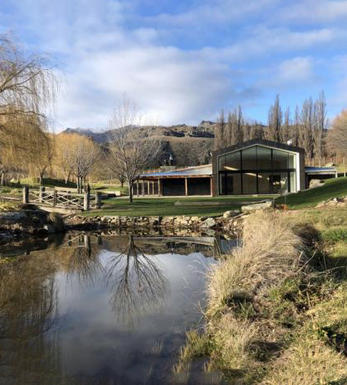
Cloudy Bay
Established in 1985, Cloudy Bay is pivotal in thrusting New Zealand’s Marlborough region into the global limelight of winemaking excellence. Nestled within the picturesque Wairau Valley, gracing the northern expanse of New Zealand’s South Island, this estate basks in the embrace of a cool climate and optimal grape-growing conditions.
The visionary behind Cloudy Bay’s inception is Australian winemaker David Hohnen. Drawing inspiration from the bay that graces the vineyard’s eastern edge, he orchestrated the debut of Cloudy Bay’s inaugural vintage of Sauvignon Blanc in the very same year of its establishment.
Infused with an unwavering commitment to sustainable viticulture practices and meticulous vineyard stewardship, Cloudy Bay remains a master in crafting peerless Sauvignon Blanc wines. As the passage of time unfurled, their repertoire flourished, embracing an array of varietals, including Chardonnay and Pinot Noir.
LVMH (Moët Hennessy Louis Vuitton) acquired Cloudy Bay from its original owner, the Australian winery Cape Mentelle. Cape Mentelle was part of the Estate Brands group before LVMH acquired the entire Estate Brands portfolio, including Cloudy Bay, in the early 2000s.
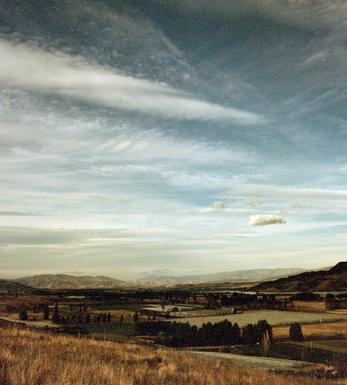
Marlborough
New Zealand's answer to Napa Valley, Marlborough is a veritable engine room that in 2006 accounted for 47 percent (10,419 hectares) of the country's vines, and over 60 percent of its production, even though it is home to just 20 percent of the nation’s 530 wineries. Around 76 percent of the vineyards are planted with Sauvignon Blanc.
Located on the north-easterly tip of South Island at a latitude of 41.3 degrees South, the Marlborough flats are protected from the tropical north-westerlies by the Richmond Ranges, separating Marlborough from Nelson. It is similarly protected from the frost-bearing Antarctic south-easterlies racing up the eastern coastline by the Kaikoura Ranges. The region consequently experiences low rainfall, together with high sunshine hours and a significant diurnal shift between day and night temperatures, thus preserving the aromatics.
The Marlborough viticultural zone, now being delineated, actually consists of three sub-regions: the fertile, alluvial soils of the Wairau Valley on the northern side (site of the original Marlborough settlement in 1880, and subsequently to Montana in 1973) is constantly fed by a subterranean aquifer, resulting in an easy, tutti-frutti style of Sauvignon Blanc best exemplified by Hunters wine.
The Southern Valleys zone on the opposite side of the Valley comprise drier, stonier, poorer soils and clay knolls (such as those of the Brancott Valley), delivering a fuller, more structured, defined, gooseberry and limey Sauvignon Blanc with more bite and poise; Cloudy Bay (who put the region on the world map in 1985), Dog Point, Isabel Estate and the Winegrowers of Ara all inhabit this stretch of the Valley.
Lastly there’s the Awatere Valley, which is located across the Kaikouras on ancient black volcanic soils amid a cooler climate, with harvests often running two weeks behind those in the Wairau Valley; the Awatere style of Sauvignon Blanc is peachier and richer than elsewhere, with Vavasour a fine example.
Although most wines are vinified in stainless steel and released within 12 months of the harvest, some enterprising growers are trialling the use of oak barrels, especially when vinifying superior parcels of hand-harvested fruit. Dog Point Section 94 is one such wine.
The region is also home to the country's small sparkling-wine industry, employing the traditional method to vinify Pinot Noir and Chardonnay. Some producers have sought to diversify into still Pinot Noir production, whilst using an inappropriate Swiss clone. A glance at what's been happening in Central.Otago and in Martinborough, however, has persuaded those serious producers to plant a greater selection of clones, notably 667, 777, Abel and 115, as well as the common Pommard (UCD 5) and 10/5. The result has been a shift from the classic Marlborough Pinot Noir spicy red fruit with its almost Côte de Beaune character towards a fuller, fleshier, smokier, black cherry Côte de Nuits style.
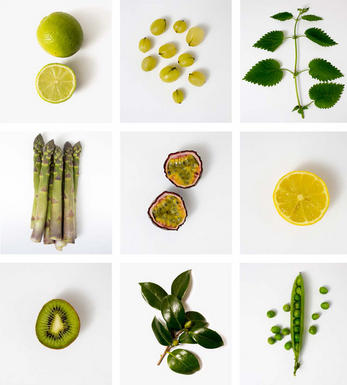
Sauvignon Blanc
An important white grape in Bordeaux and the Loire Valley that has now found fame in New Zealand and now Chile. It thrives on the gravelly soils of Bordeaux and is blended with Sémillon to produce fresh, dry, crisp Bordeaux Blancs, as well as more prestigious Cru Classé White Graves.
It is also blended with Sémillon, though in lower proportions, to produce the great sweet wines of Sauternes. It performs well in the Loire Valley and particularly on the well-drained chalky soils found in Sancerre and Pouilly-Fumé, where it produces bone dry, highly aromatic, racy wines, with grassy and sometimes smoky, gunflint-like nuances.
In New Zealand, Cloudy Bay in the 1980s began producing stunning Sauvignon Blanc wines with extraordinarily intense nettly, gooseberry, and asparagus fruit, that set Marlborough firmly on the world wine map. Today many producers are rivalling Cloudy Bay in terms of quality and Sauvignon Blanc is now New Zealand`s trademark grape.
It is now grown very successfully in Chile producing wines that are almost halfway between the Loire and New Zealand in terms of fruit character. After several false starts, many South African producers are now producing very good quality, rounded fruit-driven Sauvignon Blancs.


Buying options
Add to wishlist
Description
The 2015 Te Koko has less of the pyrazine elements than the 2014, is more mineral-driven and shows greater clarity and tension. The elegant palate is well balanced with a fine bead of acidity and hints of blackcurrant leaf and aniseed towards the complex and quite persistent finish. This is a delicious Te Koko that should give a decade of drinking pleasure, possibly more.
Drink 2018 - 2026
Neal Martin, Vinous.com (November 2018)
wine at a glance
Delivery and quality guarantee